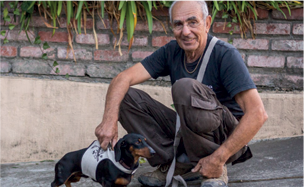
Welcome to our BLOG!
Here we chat about:
- Pets;
- Loving them;
- Living with them;
- And beautiful linen
THE VET’S “BEST FOR PET’S” CHOICES
07/06/2015
BY DR. ANNA ANGELIEWA
In my veterinary practice I often encounter problems, that are largely preventable with a little more education and attention given to the living environment of the suffering pet. Not only can simple changes decrease veterinary visits, but the whole family can benefit as well. After all, our domestic companions have sharper senses and change in their wellness do signal to us the healthfulness of our surroundings.
Many products for pets use materials , that would not meet the standards of safety for humans, as in fact they should, as they enter our homes and affect our more sensitive family members - the pets as well as the children. Such exposures can trigger skin reactions and allergies , that are rampant these days. In addition parts that come off loose or material debris can be ingested, enter the nose or ear cavity as well as the eyes and be the cause of serious internal problems or external irritations.
With this in mind:
- Look for products made of mostly natural materials. You will eliminate the risk of toxicity to your pet and your family. Plastics and nylons can off-gas toxins, as well as enter the body in tiny particles, that accumulate over time and cause a decrease in well being. Natural fibers do not produce static, giving your pet a rest from electric stress.
- Consider the material’s breathability , as trapped moisture promotes mildew, a major source of allergies and skin problems. In places your pet rests or sleeps, this will contribute to a good joint prophylactic, due to superior temperature regulation.
- Choose products, that are washable; hair, dirt and drool and dander are not your pet’s favorites, neither are the mites and germs they attract and harbour.
- Examine carefully the workmanship - loose parts are unsafe, as well as unsightly.
- Ask yourself if the items you bring home for your pets have impacted negatively a wild habitat and could they be harmful to anyone after their useful life.
- Make the choice of quality, that you would chose for your own use - it is a win for you, your pet and the world!


